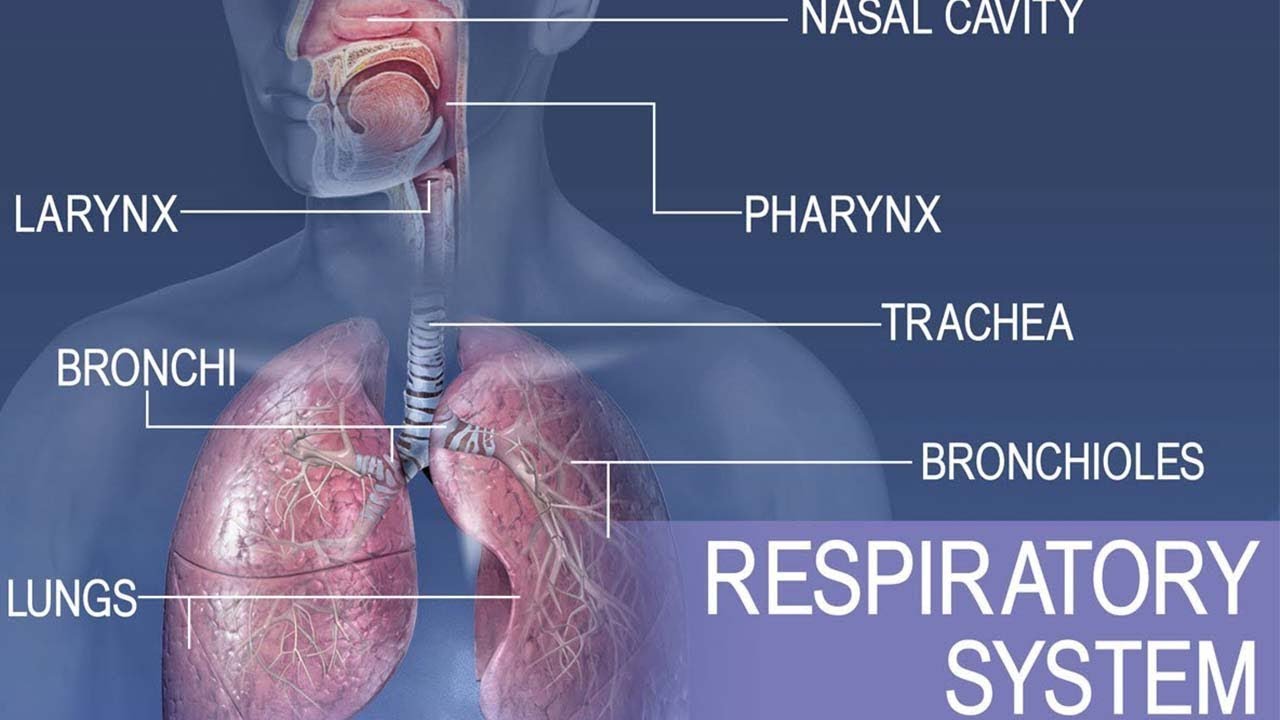The regulation of respiration | Breathing and exchange of gases | Biology | Khan Academy
Summary
TLDRThis video explains the involuntary regulation of breathing, highlighting how the brain controls this essential process. It describes the roles of the **dorsal respiratory group (DRG)** in the medulla oblongata for inhalation, and the **pneumotaxic center** in the pons for exhalation. The video also explores how physical activity increases the rate and depth of breathing due to rising carbon dioxide levels, which trigger **chemoreceptors** in the arteries. This results in faster breathing to deliver more oxygen and expel excess carbon dioxide, maintaining the body's balance.
Takeaways
- 😀 Breathing involves both voluntary and involuntary control, with the involuntary regulation being the focus of this video.
- 😀 The diaphragm and intercostal muscles, controlled by the brain, play a vital role in the breathing process.
- 😀 Breathing is both a voluntary process (such as when holding your breath) and an involuntary process (like while sleeping).
- 😀 The involuntary regulation of breathing is primarily controlled by neurons in the pons and medulla oblongata of the brain.
- 😀 The Dorsal Respiratory Group (DRG) in the medulla oblongata sends continuous nerve impulses to the breathing muscles, triggering inhalation.
- 😀 The pneumotaxic center in the pons controls exhalation by periodically switching off the DRG's signals to allow muscle relaxation.
- 😀 Inhalation occurs when the DRG is active, while exhalation happens when the DRG is inactive and muscles relax naturally.
- 😀 The pneumotaxic center regulates the rate of exhalation by turning the DRG off 12-16 times per minute.
- 😀 During physical exercise, the body produces more carbon dioxide, which increases acidity in the blood, prompting faster, deeper breathing.
- 😀 Chemoreceptors in the carotid artery, aortic arch, and near the medulla oblongata detect changes in blood acidity and send signals to the brain to adjust breathing patterns.
- 😀 When blood acidity rises, the chemoreceptors trigger the pneumotaxic center to increase the frequency and depth of breathing to improve oxygen intake.
Q & A
What muscles are responsible for the process of breathing?
-The muscles responsible for breathing are the diaphragm and the intercostal muscles, which are attached to the rib cage.
Is breathing a voluntary or involuntary process?
-Breathing is both voluntary and involuntary. While you can control it consciously (e.g., holding your breath while swimming), it automatically occurs without effort when you are sleeping.
Which part of the brain controls the involuntary regulation of breathing?
-The involuntary regulation of breathing is controlled by the lower part of the brain, particularly the pons and the medulla oblongata.
What is the role of the dorsal respiratory group (DRG) in breathing?
-The dorsal respiratory group (DRG), located in the medulla oblongata, sends nerve impulses to the intercostal muscles and diaphragm, causing them to contract for inhalation.
How does exhalation occur according to the script?
-Exhalation occurs when the pneumotaxic center in the pons switches off the signals from the DRG, causing the muscles to relax and air to be expelled from the lungs.
What is the pneumotaxic center's role in breathing?
-The pneumotaxic center, located in the pons, regulates exhalation by switching off the DRG signals. It helps control the timing of exhalation by switching off the DRG every 12 to 16 times per minute.
What happens to breathing rate during physical exercise?
-During physical exercise, breathing rate increases involuntarily because the muscles are producing more carbon dioxide, which needs to be expelled to maintain proper blood pH.
How does the body respond to increased carbon dioxide in the blood?
-The body responds by using chemoreceptors in the arteries (carotid and aortic) and the medulla oblongata to detect the increased carbon dioxide. These receptors send signals to the pneumotaxic center, which then increases the breathing rate and depth.
What are chemoreceptors and where are they located?
-Chemoreceptors are sensors that detect changes in the chemistry of blood or cerebrospinal fluid, such as increased carbon dioxide levels. They are located in the carotid arteries, aortic arch, and near the medulla oblongata.
Why does breathing become deeper during physical exercise?
-Breathing becomes deeper during exercise to allow the body to take in more oxygen in less time, addressing the increased oxygen demands of the muscles and the excess carbon dioxide produced.
Outlines

This section is available to paid users only. Please upgrade to access this part.
Upgrade NowMindmap

This section is available to paid users only. Please upgrade to access this part.
Upgrade NowKeywords

This section is available to paid users only. Please upgrade to access this part.
Upgrade NowHighlights

This section is available to paid users only. Please upgrade to access this part.
Upgrade NowTranscripts

This section is available to paid users only. Please upgrade to access this part.
Upgrade NowBrowse More Related Video

Neural Control of Breathing | Respiratory System

Anatomy and physiology of Respiratory system

How Does Breathing Actually Work???

Brain: Parts & functions (Fore, mid & hind) | Control & Coordination | Biology | Khan Academy

Mechanism of Swallowing, Animation in Child model

NERVOUS SYSTEM - ANATOMY AND PHYSIOLOGY
5.0 / 5 (0 votes)